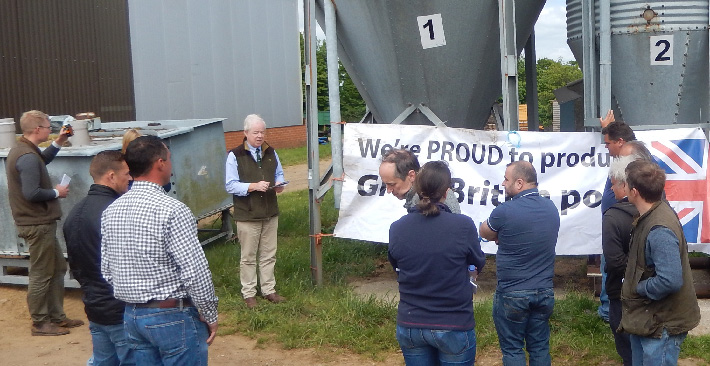It was a difficult start to the year as far as sellers are concerned, with the SPP still in retreat and dropping by 1.49p to 121.97p, and most abattoir weekly contribution prices also heading south to the tune of a couple of pence, and generally between 111p and 116p.
The spot market remains the outlet of last resort on the price front, and although spot sellers with regular slots in abattoirs were able to achieve prices in the 105p to 112p region, one-off loads of heavyweight spot bacon pigs were in some cases trading at less than 100p, but the alternative of letting them go overweight could be even more expensive with pigs that simply have to go.
It was hoped that news of a three cent rise in German pig prices coupled with a much firmer Euro which traded at noon on Friday worth 74.98p compared with 73.4p a week earlier, might have put a little bit more money on the table as far as imports were concerned, but the net result in the cull sow market was to see a mere penny added to recent quotes, with most culls traded in the 50p to 53p range according to load size.
The weaner market continues to exhibit bearish trends, with the latest AHDB 30kg weaner average dipping below the £40 benchmark to £39.04 and the 7kg average a shade firmer than last week’s figure at £31.55/head.
Signs of an end to falling pig prices, and possibly better returns in Europe which might be on the horizon, would work wonders as far as the confidence of weaner buyers is concerned, many of whom are preferring to sit on the side lines and are reluctant to buy until some stability has returned to the market following the old maxim “never catch a falling knife . . . wait until it hits the ground first”.
The recent floods in the north have also lead to capacity problems on some rearing/finishing units.
As with finished pigs, there’s a huge spread between contract and spot quotes, with weaner contracts worth their weight in gold compared with their spot counterparts.
One continuing flickering ray of sunlight in this gloomy market is the downward pressure on feed prices which are now quoted on a spot ex-farm basis in Farmers Weekly at £102.20/t compared with £128.60/t a year ago.
Reports of a fall in German pig numbers with the provisional November census showing sow numbers down by 4% and in pig gilts by 6% may also help to put a bottom in the already weakened EU market.
Feed wheat futures prices have also continued to ease with January quoted at £109.80/t and July at £116.75/t and reports of a record soya bean harvest for Brazil will also help to keep the bulls out of this particular market too.
US winter wheat conditions have also improved on last year and agricultural markets are also reacting negatively to the volatile Chinese financial situation.
Record lows for crude oil prices and a weak rouble could also add to downward pressure on global wheat prices.
Finally, with most breeder-finishers having cost of production levels in the region of 125p to 135p deadweight, there’ll be very few now still in the black, with red ink dominating many pig unit P&L accounts as producers start to work through their year-end figures.
Unless we see a significant revival in pig prices and margins in the months ahead, I’m afraid it looks as though more pig producers and their herds could be heading for the exit door.




